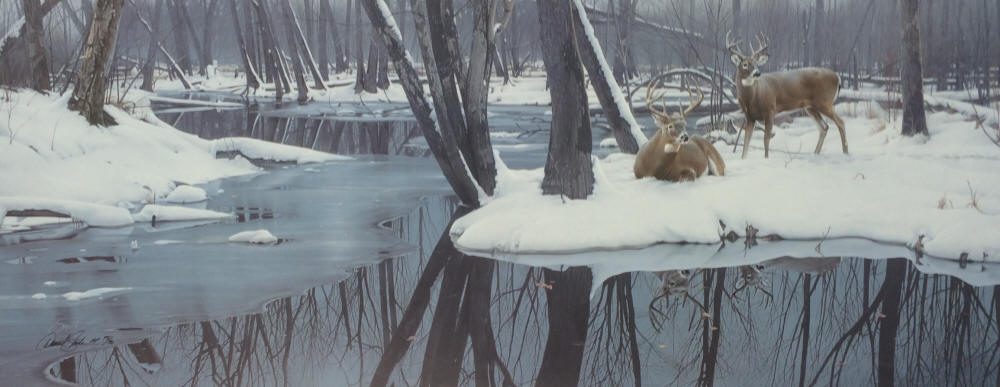Winter Whites
I am fortunate to be able to osbserve many species of wildlife from my home in the Rocky Mountains. White-tailed deer are a common sight that I'll never tire of. Their beauty and grace are incomparable.
The habitat in "Winter Whites" is similar to the river bottoms I explored as a youth. Many times I returned home from my explorations with wet feet from testing the strength of the ice. My familiarity with this kind of setting beckoned me to paint this typical whitetail environment.
White-tailed deer prefer areas such as this one with sufficient vegetation to conceal them. Most active at dawn and dusk, they are excellent swimmers and can flee from danger at speeds up to 64 miles per hour. Their diet consists of grass, weeds, shrubs and twigs, and they browse part of the year on deciduous vegetation in riparian areas. Their range is from southern Canada, through most parts of the United States, with the exception of the Southwest, and into Mexico, Peru and Northeastern Brazil. A typical family unit consists of a doe, her yearling daughter and two fawns. Young females may remain with their mothers for two years, but the males generally strike out on their own after one year. Adult males may be loners or they may congregate in small groups, as seen here, except during the rut or mating season, when they are in competition with each other for the females. Fawns are born spotted and able to stand after only a few hours.
I remember coming upon undisturbed scenes such as this when off exploring on my own. Many times, the tranquility of winter's stillness would suddenly be broken for me, as it has been for these two bucks, by the raucous warning call of a blue jay.
- Daniel Smith

